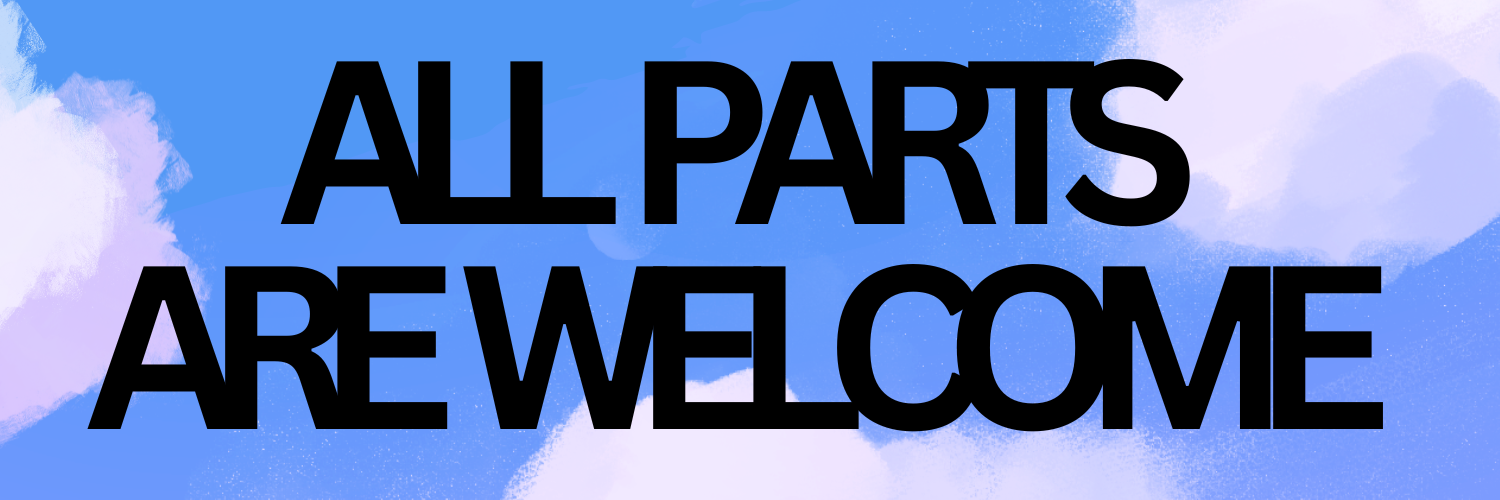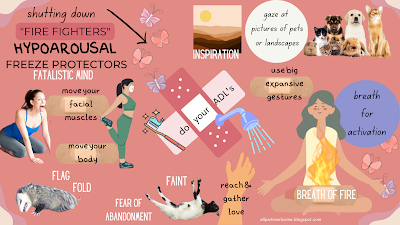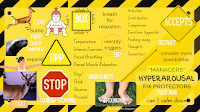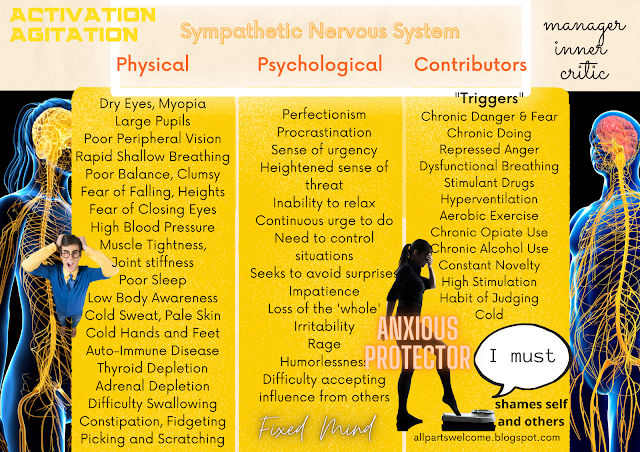see also: Simple Steps from Anxiety to Self Energy
Frank Rogers Jr. on Self Led Activism
Frank Anderson on Protector Fears
- Internal Family Systems:
- Self Energy: this is your core self that you access when calm and connected (Flexible Mind)
- Anxious Protectors: this is your Manager Fix Protector (Fixed Mind)
- Avoidant Protectors: this is your Fire Fighter Freeze Protector (Fatalistic Mind)
- Wounded Child: this is your Exiled Trauma Memories
- Workbook: Internal Family Systems Self Therapy by Weiss
.png)
Calm
At the anxious extreme, calm is replaced by hypervigilance and overactivity. The nervous system is on high alert, scanning for danger, and unable to rest. At the avoidant extreme, calm collapses into numbness and depression, where energy is drained and there is little motivation to engage. The pathway back to calm involves slowing down, soothing the body, and practicing grounding rituals. For those stuck in numbness, the strategy is gentle movement and gradual re-engagement with the environment to bring vitality back online.
Continuum: Hypervigilant → Calm → Numb
Connected
At the anxious extreme, connection becomes panic and fear of abandonment. There is a desperate pull toward others, but it can feel clingy or overwhelming. At the avoidant extreme, connection withdraws into disconnection and isolation, cutting off relational bonds. Returning to Self involves listening deeply to oneself and others, allowing space without urgency. On the avoidant side, the strategy is to rebuild trust slowly and foster safe bonds that make connection feel possible again.
Continuum: Clingy/Panicked → Connected → Disconnected
Creative
At the anxious extreme, creativity distorts into a punitive inner critic and perfectionism — demanding flawless outcomes and stifling expression. At the avoidant extreme, creativity goes dormant in procrastination and avoidance, where nothing gets started. The way back to Self involves softening expectations and allowing imperfection, permitting small acts of expression. For avoidant parts, the key is to gently awaken curiosity with the mindset of “just try”, lowering the threshold for engagement.
Continuum: Perfectionistic → Creative → Procrastinating
Curious
At the anxious extreme, curiosity hardens into compulsive control, rigidity, and stubbornness — seeking certainty instead of exploration. At the avoidant extreme, curiosity fades into apathy and disinterest, where nothing seems worth engaging. Returning to Self means loosening control and experimenting, tolerating not knowing. On the avoidant side, the strategy is to re-engage gently with small explorations, allowing interest to spark without pressure.
Continuum: Controlling/Rigid → Curious → Apathetic
Courage
At the anxious extreme, courage erupts as aggression, irritability, or an angry child part — energy without balance. At the avoidant extreme, courage collapses into passivity or fawning, where boundaries are lost to please others. To return to Self, courage is reclaimed through assertiveness and standing up for one’s needs without hostility. On the avoidant side, the path is to practice naming and holding boundaries, standing for self-worth in small steps.
Continuum: Aggressive → Courageous → Passive/Fawning
Compassion
At the anxious extreme, compassion distorts into blame of others or selfishness, where one’s own needs eclipse awareness of others. At the avoidant extreme, compassion collapses into selflessness to the point of erasure, where others’ needs dominate. Returning to Self involves seeking perspective and validating others while not abandoning the self. On the avoidant side, the strategy is to turn compassion inward, validating one’s own feelings and needs as equally worthy.
Continuum: Blaming/Selfish → Compassionate → Self-Erasing
Clarity
At the anxious extreme, clarity becomes flooded and frozen, where overwhelm makes everything seem urgent and confusing. At the avoidant extreme, clarity dissolves into confusion and disorientation, where it is hard to organize thought or action. Returning to Self involves filtering and focusing attention, choosing one priority at a time. From the avoidant side, the strategy is to ground in the body and practice self-enquiry, gently naming what is real in the present moment.
Continuum: Overwhelmed/Flooded → Clear → Confused
Calm
At the anxious extreme, calm is replaced by hypervigilance and overactivity. The nervous system is on high alert, scanning for danger, and unable to rest. At the avoidant extreme, calm collapses into numbness and depression, where energy is drained and there is little motivation to engage. The pathway back to calm involves slowing down, soothing the body, and practicing grounding rituals. For those stuck in numbness, the strategy is gentle movement and gradual re-engagement with the environment to bring vitality back online.
Continuum: Hypervigilant → Calm → Numb
Connected
At the anxious extreme, connection becomes panic and fear of abandonment. There is a desperate pull toward others, but it can feel clingy or overwhelming. At the avoidant extreme, connection withdraws into disconnection and isolation, cutting off relational bonds. Returning to Self involves listening deeply to oneself and others, allowing space without urgency. On the avoidant side, the strategy is to rebuild trust slowly and foster safe bonds that make connection feel possible again.
Continuum: Clingy/Panicked → Connected → Disconnected
Creative
At the anxious extreme, creativity distorts into a punitive inner critic and perfectionism — demanding flawless outcomes and stifling expression. At the avoidant extreme, creativity goes dormant in procrastination and avoidance, where nothing gets started. The way back to Self involves softening expectations and allowing imperfection, permitting small acts of expression. For avoidant parts, the key is to gently awaken curiosity with the mindset of “just try”, lowering the threshold for engagement.
Continuum: Perfectionistic → Creative → Procrastinating
Curious
At the anxious extreme, curiosity hardens into compulsive control, rigidity, and stubbornness — seeking certainty instead of exploration. At the avoidant extreme, curiosity fades into apathy and disinterest, where nothing seems worth engaging. Returning to Self means loosening control and experimenting, tolerating not knowing. On the avoidant side, the strategy is to re-engage gently with small explorations, allowing interest to spark without pressure.
Continuum: Controlling/Rigid → Curious → Apathetic
Courage
At the anxious extreme, courage erupts as aggression, irritability, or an angry child part — energy without balance. At the avoidant extreme, courage collapses into passivity or fawning, where boundaries are lost to please others. To return to Self, courage is reclaimed through assertiveness and standing up for one’s needs without hostility. On the avoidant side, the path is to practice naming and holding boundaries, standing for self-worth in small steps.
Continuum: Aggressive → Courageous → Passive/Fawning
Compassion
At the anxious extreme, compassion distorts into blame of others or selfishness, where one’s own needs eclipse awareness of others. At the avoidant extreme, compassion collapses into selflessness to the point of erasure, where others’ needs dominate. Returning to Self involves seeking perspective and validating others while not abandoning the self. On the avoidant side, the strategy is to turn compassion inward, validating one’s own feelings and needs as equally worthy.
Continuum: Blaming/Selfish → Compassionate → Self-Erasing
Clarity
At the anxious extreme, clarity becomes flooded and frozen, where overwhelm makes everything seem urgent and confusing. At the avoidant extreme, clarity dissolves into confusion and disorientation, where it is hard to organize thought or action. Returning to Self involves filtering and focusing attention, choosing one priority at a time. From the avoidant side, the strategy is to ground in the body and practice self-enquiry, gently naming what is real in the present moment.
Continuum: Overwhelmed/Flooded → Clear → Confused
Freeze as a transitional response:
That freeze can feel like panic “locks up”—immobility with high internal charge. It’s sometimes described as a blended state of SNS energy with dorsal vagal inhibition. Outwardly still, but inwardly buzzing.



.png)







%20(1).png)





